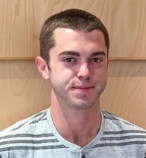Former CIS Undergraduate's Research with Drones Featured in CASCADE Magazine

"There's more to drones that getting them off the ground. You could say that Jack Ziesing’s research really took off.
His lab experience as a student in computer and information science has given him entry into the growing industry of “unmanned aerial vehicles”—you know them as drones.
Working with assistant professor Michel Kinsy, a new member of the faculty, Ziesing, who graduated earlier this year, studied communications and control systems for drones. He put together the memory chips, processors, and circuit boards that control drones during flight.
Kinsy’s lab is trying to solve problems that could ground the drone industry. One of them is getting all parts of the drone “brains”—the chips and circuit boards that control navigation, flight patterns, and onboard memory—to work together fast enough for flight. Once airborne, the drones also must carry out complex missions such as mapping, taking photographs, or looking for specific targets.
The other hurdle is making sure that the way all those parts pass information to one another, and the way the drone communicates with an operator, are secure against hacking or takeover by third parties. Researchers want drones to operate independently by carrying out flight instructions programmed into their onboard computers, but they usually have a backup that also allows them to be controlled via radio frequencies by an operator on the ground. Both systems must be protected.
To do that, researchers have to understand a drone’s components at a fundamental level. So the work in Kinsy’s lab delves more into computer hardware and less into actual flying, at least for the time being. Ziesing’s contribution, which also served as an independent research project, was to help build circuitry that boosts performance and communication."
Read the rest of the article, Flight Tracker in the Fall 2015 edition of CASCADE, the online magazine of the UO College of Arts and Sciences.